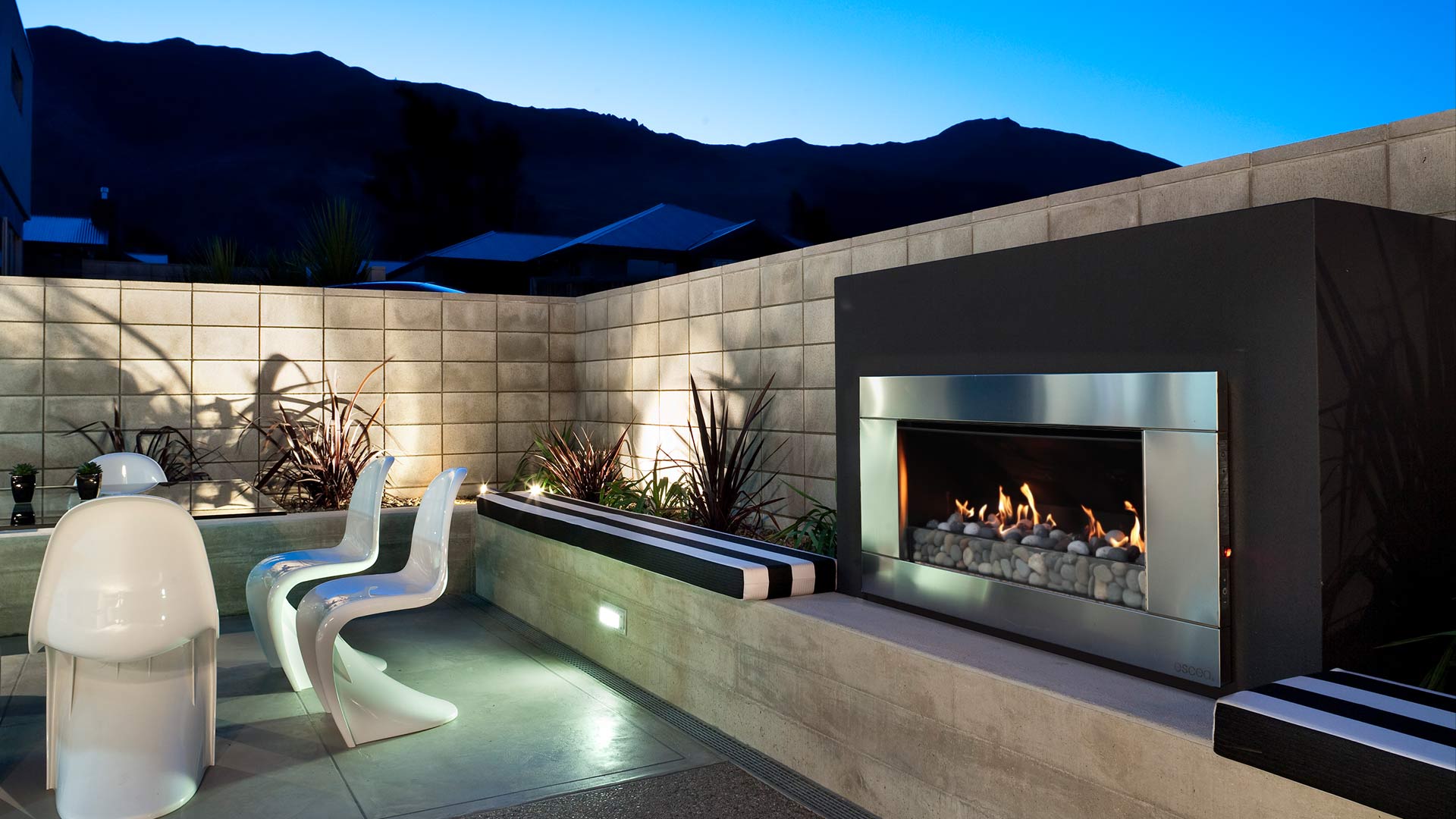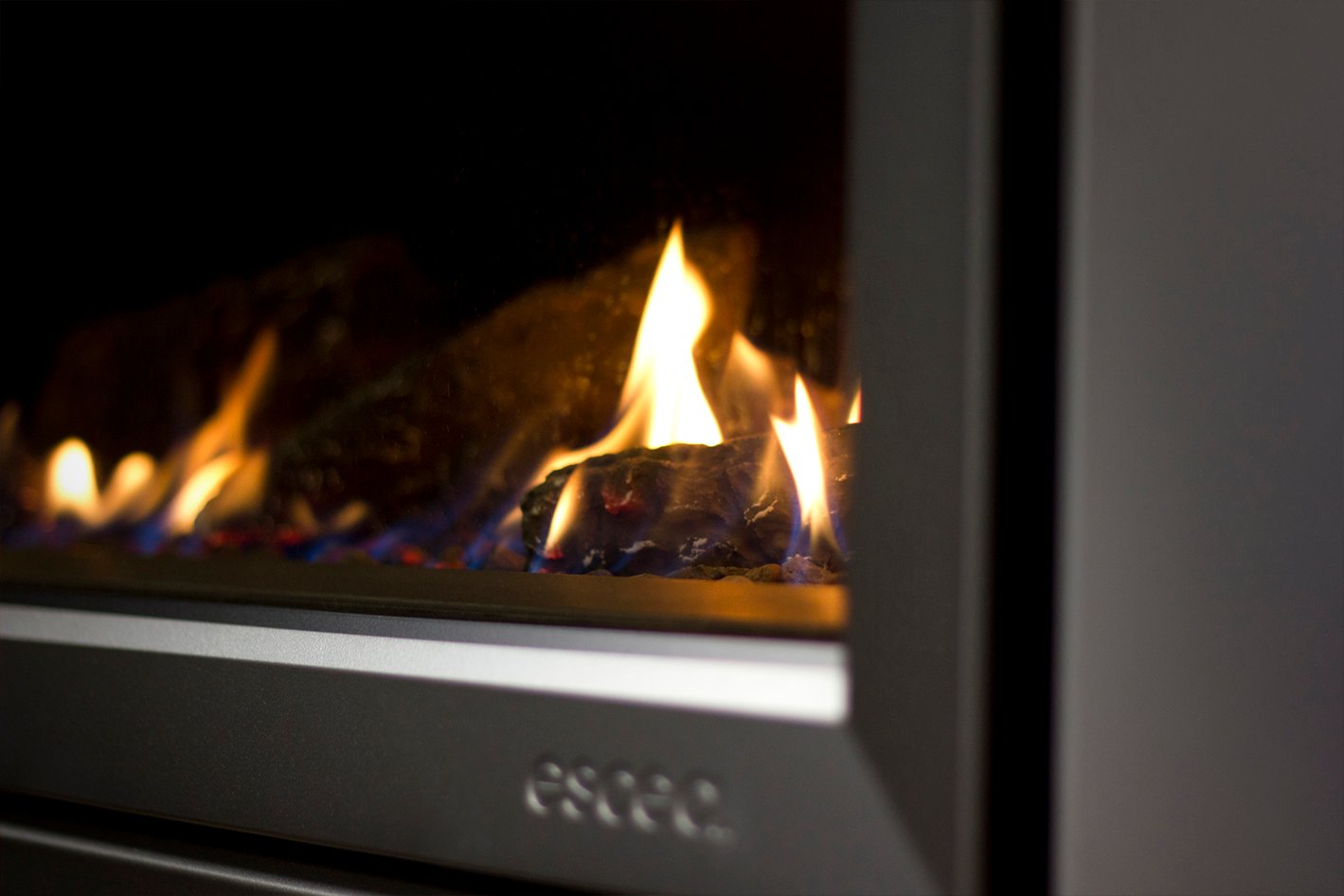When considering a gas heater for a house, amongst the more common questions asked is: What’s the difference between open fronted and glass fronted? While visually there may seem little difference, what you don’t see is where the real differences occur.
1. Open gas fire - efficiency
Open gas fires work in much the same way as a traditional solid fuel open fireplaces using a cleaner fuel source. This means the fire will use air from the room as an ignition source, and while a certain amount will be drawn under the fire and recirculated into the room whether fan assisted or through natural convection, a proportion of the rooms warm air will be drawn into the fireplace box and travel out through the vent.
An open fire also provides a vent for warm air to be drawn out of the house when it is not in use much as a traditional open fire does. Both of the above will require replacement air from outside to be introduced to maintain airflow. Therefore as the fire attempts to increase a room’s temperature it requires more air. This, in turn, means that energy input (gas) to heat output (Btuh) becomes disproportionate thus reducing efficiency.
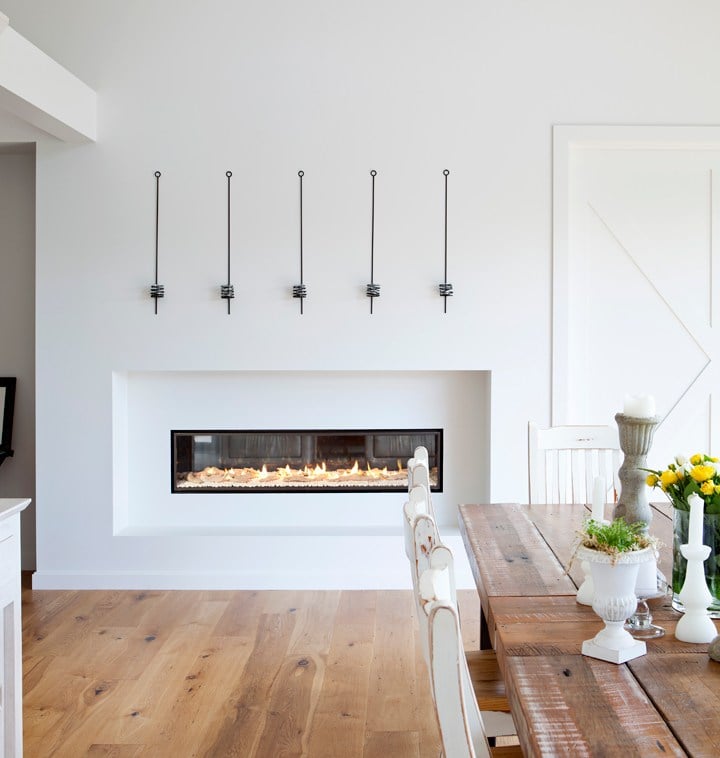
2. Glass front gas log fire - efficiency
Glass fronted gas fireplaces such as the Escea KS Series range are sealed units. This allows the above issues to be overcome by introducing air directly into the chamber from outside.
As the gas log fire is sealed from the room there is no requirement for replacement air, or loss of heat through the fire. Air from within the room is pulled in through the front of the fireplace surround and over a heat exchanger then circulated back via either a fan or duct system.
This reduces the temperature difference between the rooms incoming and outgoing air to be minimum, thus achieving a more constant temperature. This type of system allows both the above Escea ranges to run at between 85-90% efficiency.
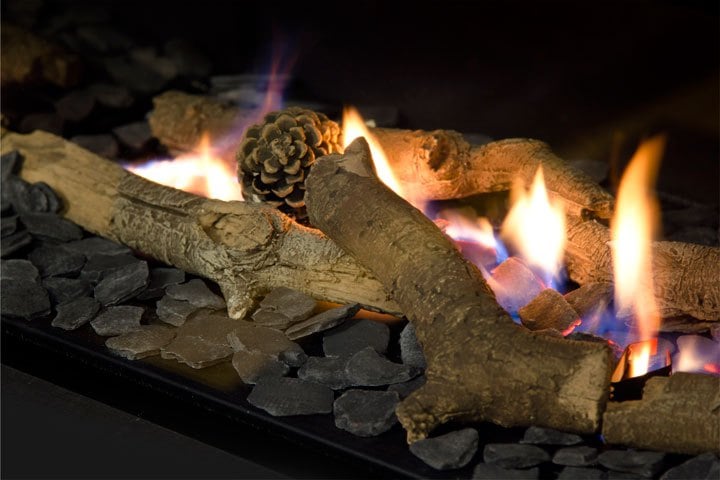
3. Safety
Efficiency isn’t the only benefit of a glass-fronted fireplace. The fact that they are airtight and sealed means that the room is safe from exhaust fumes. All Escea gas fireplaces are all glass fronted because this is the only way to seal the combustion area of the fireplace.
One of the things that confuses people the most is vent types. To help you understand how gas fireplaces work, we've explained some common vent types to get to know the types of vents here.
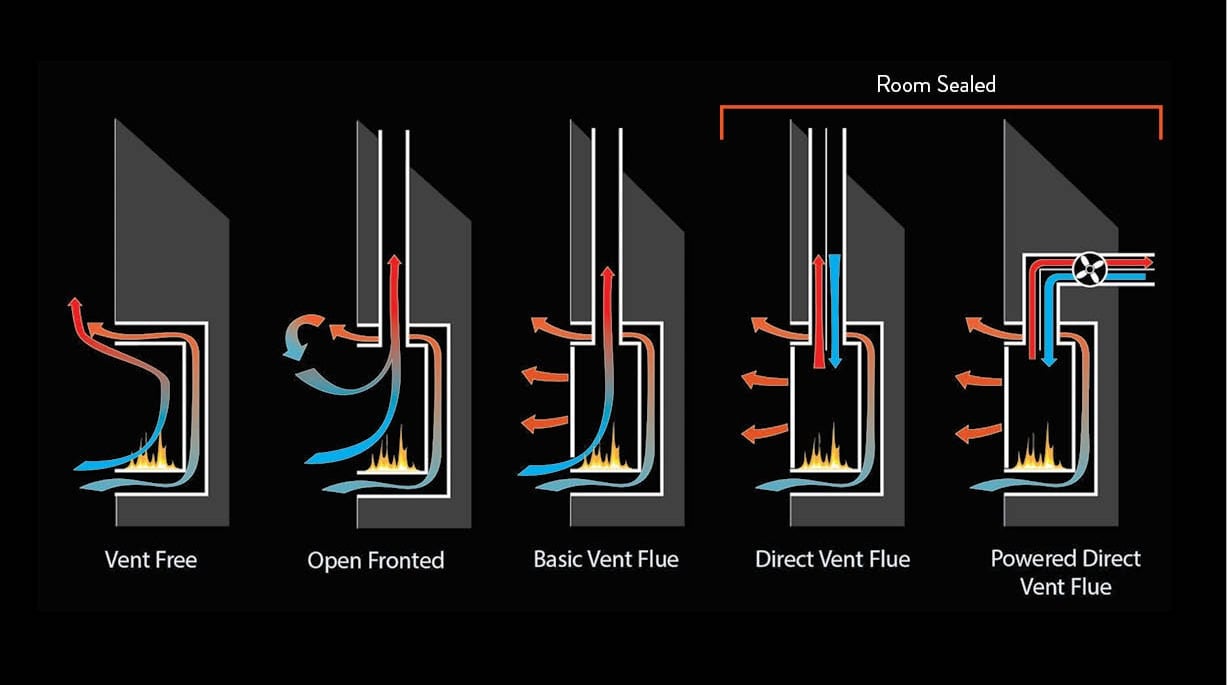
4. Heat Output
While efficiency is sometimes confused with output, they are totally different scenarios. Efficiency as described above is the amount of input (gas) used to produce an output (heat). Therefore in the case of the Escea KS Series fireplaces 85–90% of gas is turned into an output of between 8.4 – 10.4Kw.
For an example of the benefits of a glass fronted over open fronted gas fires, consider the following. An open fronted gas log fire currently on the market puts out 2.3Kw while the same heater fitted with a glass front achieves 6.97Kw, for the same input. Therefore not only using the gas more efficiently, but giving a 300% increase in output.
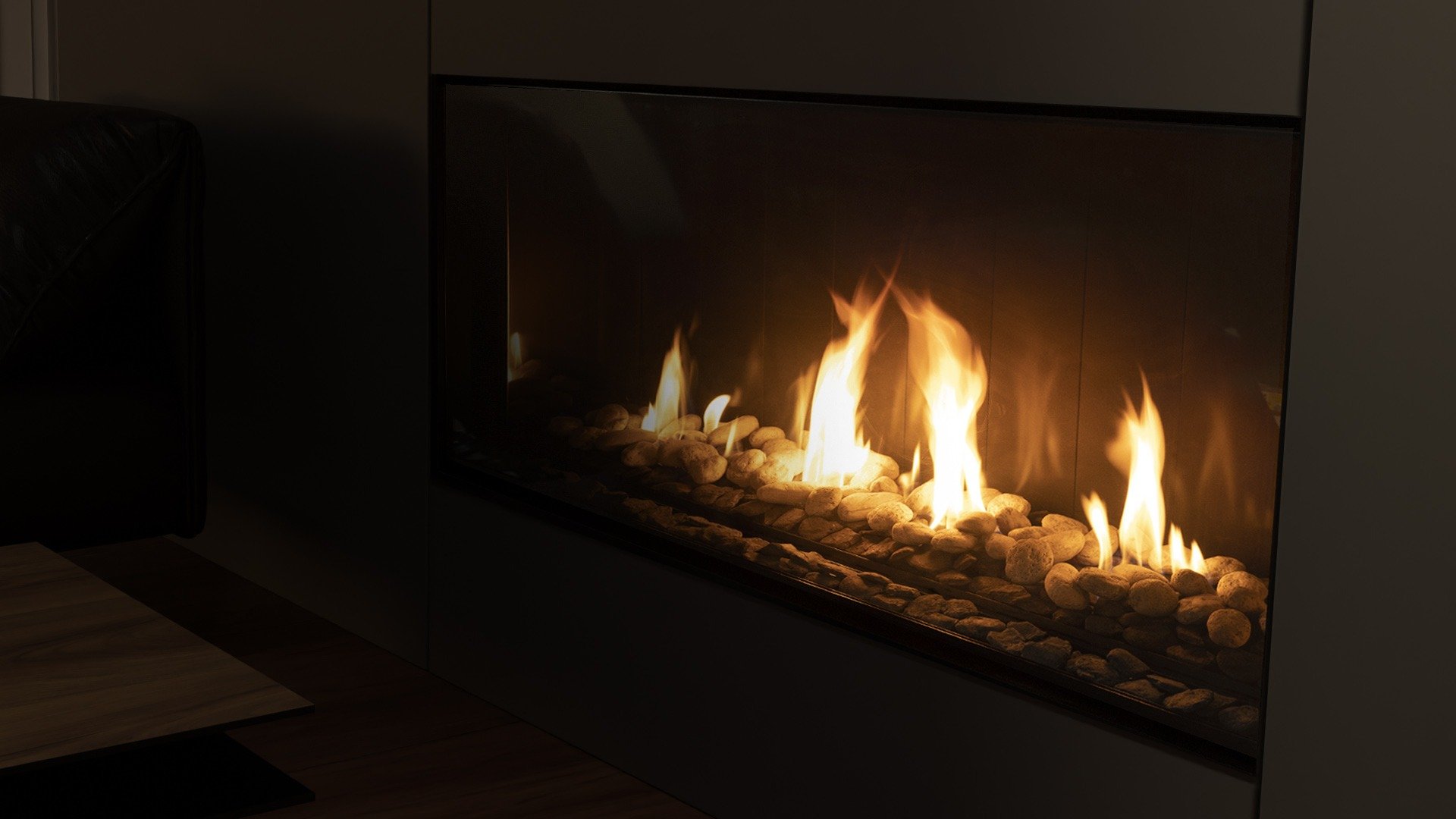
5. Fireplace Location
The requirement of open fronted heaters to draw air in means for the vents to work at maximum efficiency it needs to be vertical and straight (other factors such as diameter and length also need to be considered). Because of this, these types of fires can only be installed in positions where either the vent can be exposed or built into a chimney breast style structure. Both of these installations will require the roof cladding to be penetrated.
All Escea gas fireplaces are designed using the very latest vent technology. The Powered Direct Vent system in these units uses a fan to both bring air from outside into the fire box and expel exhaust back out. Using this technology the fire is able to be installed in almost any situation with the powered vent able to be installed vertically, horizontally or even through the floor.
Read our blog about the difference between unflued and flued gas heaters.
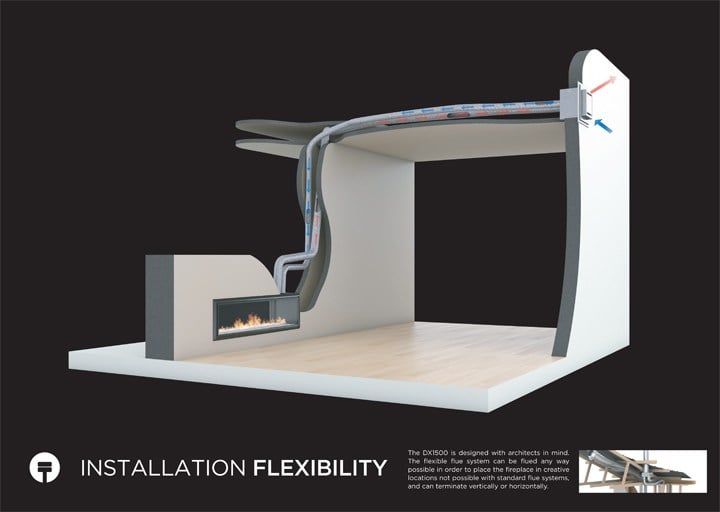
So which gas fireplace to choose?
If your choice of fire is made solely on the visual attributes of the fireplace then it is as simple as the personal preference. However, if you wish to combine something aesthetically pleasing with efficient cost effective heating the choice always has to be the glass-fronted option.
Did you know Escea can vent up to 40 meters?
Architects and Specifiers: One-on-one bookings can be made with the Architectural Advisory team at Escea for project specifications, training and more. Book now to lock in time with a team member best suited to your needs.
